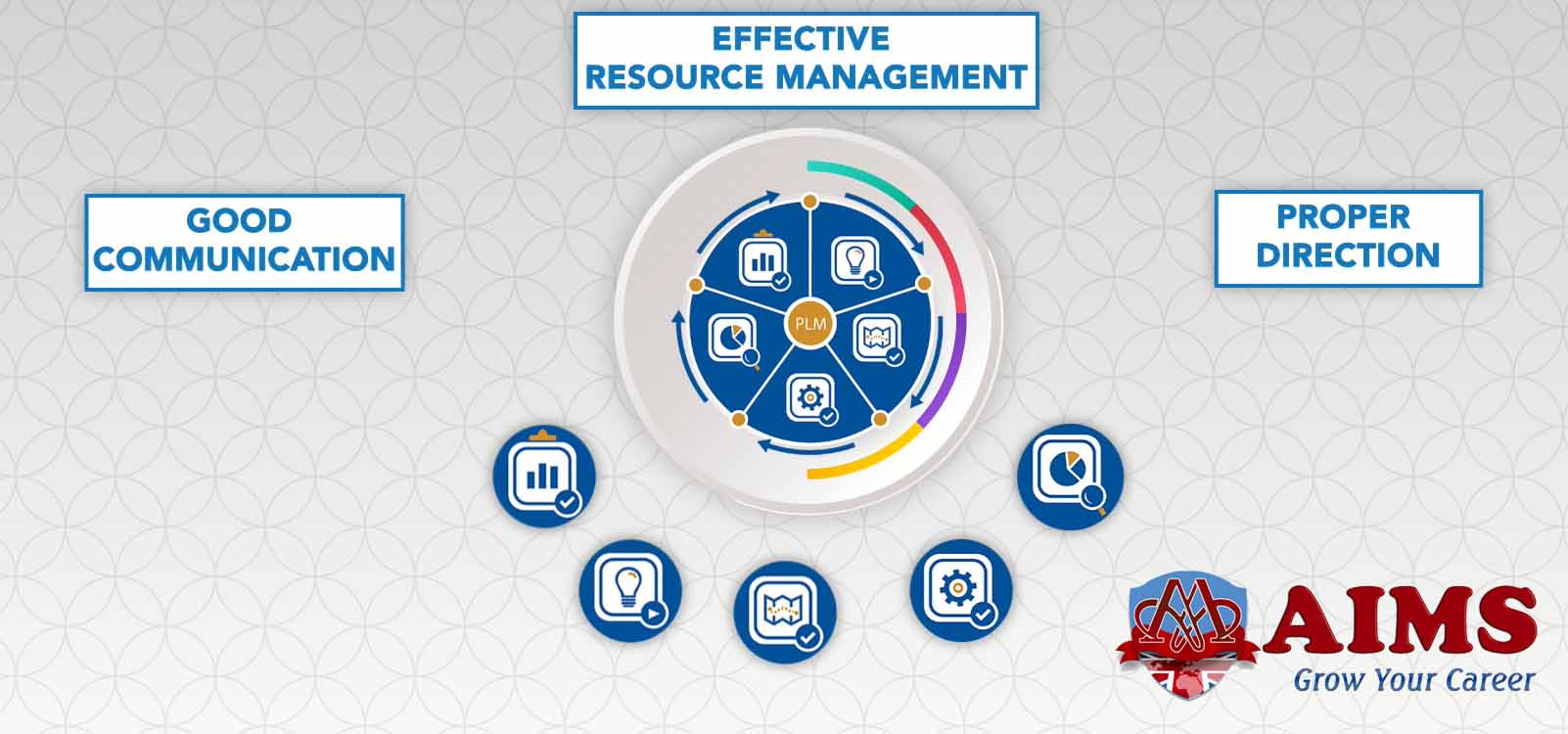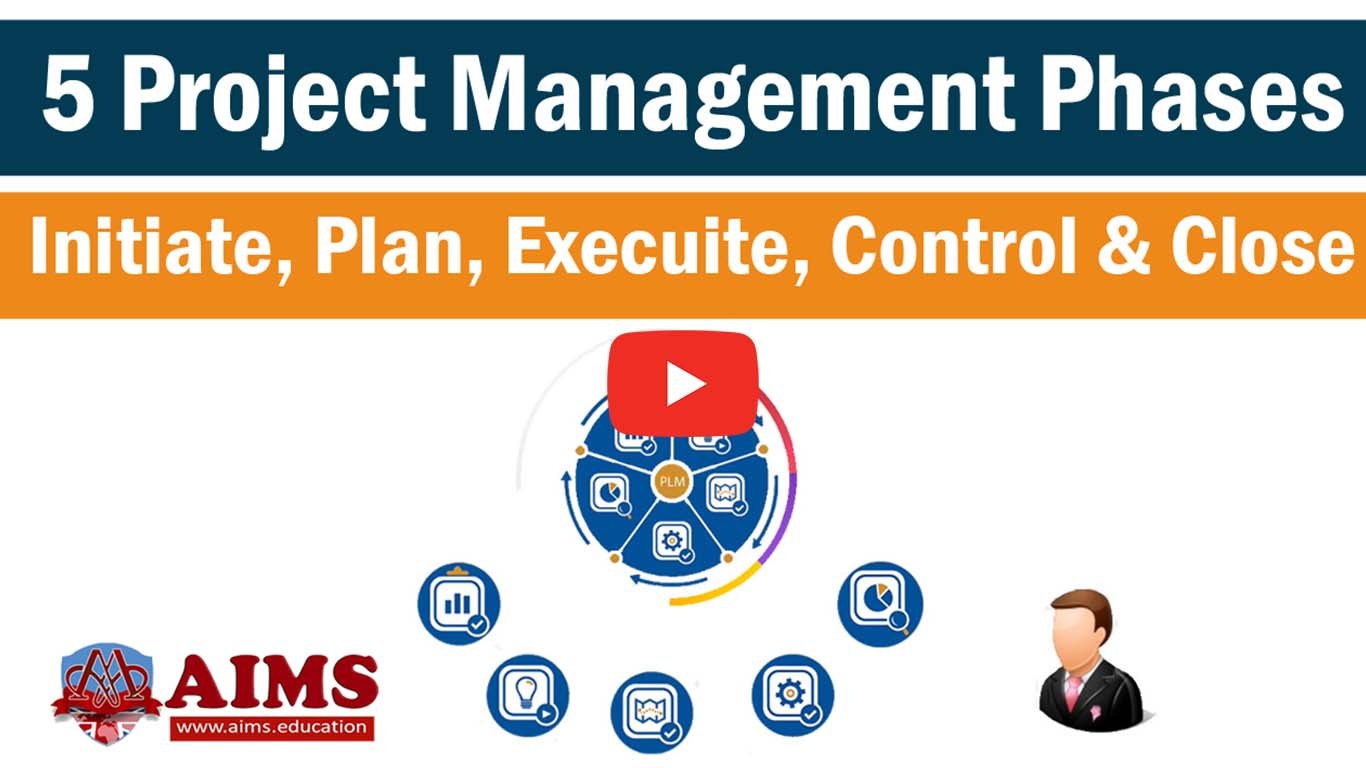Project Management Phases
A project is a set of activities that are linked together to achieve a particular goal. Getting a project done, especially one that involves considerable resources and personnel requires effective planning and oversight. Project management stages takes more than just establishing a hierarchy of management to oversee such endeavors, it takes the formation of project management phases to ensure that it gets accomplished. There are 5 project management phases in the project life cycle, and they are: Initiation, Planning, Execution, Monitoring, and Conclusion.
What is Project Management Life Cycle?
The project life cycle consists of five basic phases that ensure good communication, effective resource management, and proper direction to the completion of the project itself. A good project manager will oversee the project management stages to make sure that each is completed properly.
5 Basic Project Management Phases
The project management life cycle consists of following five phases. Each of the project management phases is distinct and must be executed in order for the project to succeed.
- Initiation: The project is initiated and the project management steps are put into place.
- Planning: The creation of the plan based on the activities started during the initiation phase.
- Execution: All resources are allocated, personnel put into place, and the plan is put into motion.
- Control & Monitoring: While similar to execution, this is the phase that keeps the project moving forward despite potential obstacles.
- Closure: Here, the project closes with all the pieces of the plan fully completed.

Phase 1: Initiation
There are two major activities that take place during this step:
- The creation of the business case document to justify the project and a feasibility study to ensure that the timeline, costs, and goals are set.
- If the project is deemed unjustifiable, too expensive, or too time-consuming, it can be abandoned with little cost at this point.
Phase 2: Planning
Here, the team puts together a plan that will guide them in project financial management, managing project human resources, getting the right materials, defining project scope management, and managing project quality to the completion of the project. The creation of the plan will also anticipate potential risk and communicate to stakeholders the benefits of completing the project.
Phase 3: Execution
This is the project management phase, during which most people can see the business project management at work. The activities start by completing each project management step of the plan in order. The role of the project manager is to guide the team members in executing the plan and start the next step only when ready.
Phase 4: Control & Monitoring
Here, the activities are focused on preventing or at least limiting outside factors that may slow down a project. For example, when constructing a building factors such as weather, delays in getting supplies, or a slowing down of the work-rate is addressed as quickly as possible.
Phase 5: Closure
At this project management phase, the activities focus on completing each step of the plan. This means evaluating the current state of the project, addressing any concerns, and bringing it to a close. Evaluation and documentation are critical.

5 Key Benefits of Project Management Phases
Project management stages are integral to effective project management for several reasons:
1. CLARITY AND DIRECTION
- Project management phase provides a clear roadmap, outlining the path from project initiation to closure.
- This enables all stakeholders to understand what needs to be done, when, and by whom, thereby ensuring everyone is on the same page.
2. CONTROLLED PROGRESS
- Each of the project management stages ensures that everything is going as planned before progressing to the next project management stage.
- This reduces the risk of project failure and helps maintain the project’s scope, budget, and timeline.
3. EFFICEINT RESOURCE MANAGEMENT
- Following the project life cycle phases facilitate better allocation and management of resources.
- Clearly defined tasks and deliverables for each phase allow project managers to allocate resources more effectively.
4. IMPROVED RISK MANAGEMENT
- Project management stages assist in identifying and managing potential risks.
- The project’s risk profile can be changed in each step, which allows proactive risk management in projects.
5. LEARNING AND IMPROVEMENT
- The structured approach obtained by the project management phases allows continuous learning and improvement.
- Lessons learned in one phase can be applied to subsequent phases (or even in next projects), increasing the chances of project success.
Project Management Phases: Case Studies
Example 1: Information Technology
Consider the development of a new software application. For the successful completion of project management, the project manager will take the following project management steps:
- Since there is a need for a new application, the project initiation phase is commenced.
- Moving onto the Planning Phase, a detailed roadmap is created called Project Document. It comprises design specifications, resource allocation, and a timeline.
- During the Execution Phase, the actual coding and testing of the application takes place.
- Concurrently, in the Monitoring and Controlling Phase, project managers supervise the development process.
- Finally, the Closure Phase is ushered in once the application is successfully developed and tested.
Example 2: Construction
The below example illustrate the project management phases in the construction industry:
- First of all, the need for a new building is recognized, and fundamental plans like location and purpose are determined.
- In the Planning Phase, detailed blueprints are developed, resources are allocated, and a construction timeline is established.
- Then, in the Execution Phase, actual construction activities begin, following the project plans created earlier.
- During the Monitoring and Controlling phase, project managers track progress, ensure compliance with the blueprint and schedule, and make any required adjustments.
- Finally, in the Project Closure Phase, completed building is evaluated, feedback is gathered, and learned lessons are recorded.
Project Management Phases in Agile and Prince 2
Various project management methodologies use different project management phases in their project life cycle. The above-explained project management phases are applied to Linear or waterfall project management. However, the project management stages and steps are different for Agile project Management Methodology and Prince2. Let us quickly review the project management phases in Agile and Prince 2:
4 Project Management Phases in Agile
In Agile methodology, project management is broken down into four essential phases. They are Envation, Speculate, Explore, and Adapt:
- Envision Phase: In the first project management phase, the project vision is established, and initial user stories are identified.
- Speculate Phase: Next, the project team speculates (plans) the release and iteration based on the project vision and user stories.
- Explore Phase: During the third project management phase, the team develops and delivers the system features.
- Adapt Phase: Finally, the team reviews and adjusts the project plan and practices based on the results of the exploration phase.
7 Project Management Phases in Prince 2
Unlike the Waterfall and Agile, the PRINCE2 methodology comprises a total of seven phases. They are defined below:
- Starting up a Project: This is the pre-project stage where the project’s viability is checked.
- Initiating a Project: The project approach is defined, and a detailed project plan is developed.
- Directing a Project: At this project management phase, the project board oversees the project.
- Controlling a Stage: Project managers oversee individual project management stages.
- Managing Product Delivery: This project management phase focuses on managing the creation and delivery of project products.
- Managing a Stage Boundary: The project board reviews and approves the completion of a project.
- Closing a Project: Finally, the project is formally closed, and a review is conducted to identify lessons learned.
Summary
Once all the project management phases are completed, the project itself is completed and can be evaluated to spot any errors, concerns, or lessons that can be used for future project management steps on another concern. The more efficiently the project management activities are executed, the better the results will be. The project management phases (in projects, programs and project portfolios) for different project management methods is an integral part of AIMS’ project management qualifications. These programs include project management online certification, diploma in project management and MBA masters in project management.
Frequently Asked Questions
Q1: What are the five phases of the project management life cycle?
The five phases are Initiation, Planning, Execution, Monitoring & Controlling, and Closure.
Q2: Why is the Initiation phase important?
It validates the business case and feasibility so you can stop early if the project isn’t viable.
Q3: What should a Planning phase include?
A roadmap for scope, schedule, budget, resources, quality, communications, risks, and stakeholder alignment.
Q4: How does Execution differ from Monitoring & Controlling?
Execution delivers the work; Monitoring & Controlling tracks performance and mitigates risks to stay on plan.
Q5: What happens in the Closure phase?
Acceptance, handover, documentation, release of resources, and capturing lessons learned.
Q6: What are the key benefits of using phases?
Clarity, staged control, efficient resource use, better risk management, and continuous improvement.
Q7: How do phases work in Agile projects?
Agile uses Envision, Speculate, Explore, and Adapt—iterative loops that refine scope and deliver increments.
Q8: What are the PRINCE2 phases?
Starting up, Initiating, Directing, Controlling a Stage, Managing Product Delivery, Managing a Stage Boundary, and Closing.
Q9: Can you share a software development example?
Define the business case and feasibility, plan design and resources, code and test, govern progress, then close and review.
Q10: Which risks are managed during Monitoring & Controlling?
Schedule slips, cost overruns, quality defects, supplier delays, and external factors like weather or regulations.
Q11: How do phases support resource management?
They time-box deliverables so managers can allocate people and materials effectively and avoid bottlenecks.
Q12: What documentation should be produced across phases?
Business case, feasibility, project plan and baselines, status and change logs, acceptance records, and lessons learned.

